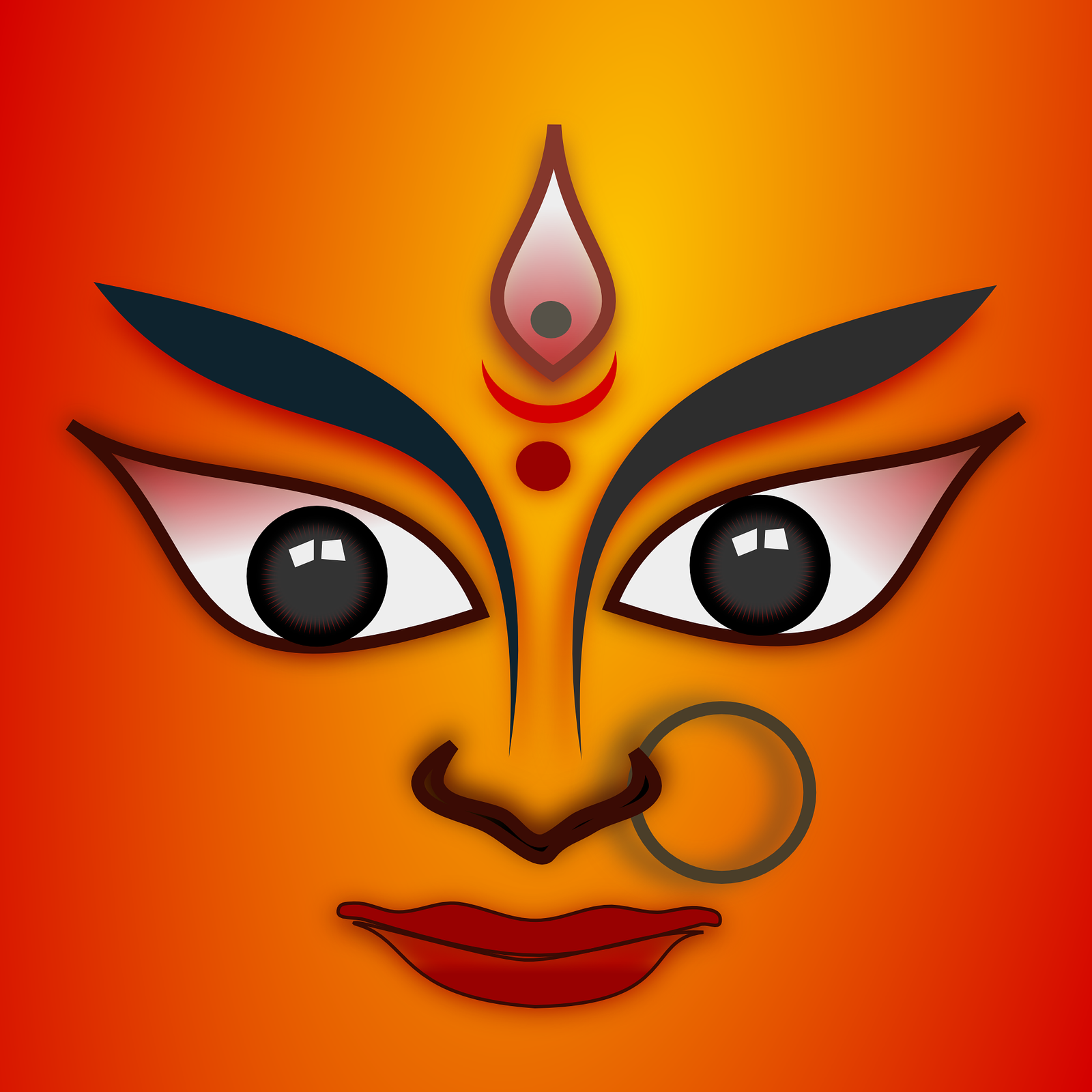Get ready to be awestruck by the power of Durga! In the vibrant tapestry of Hinduism, Goddess Durga reigns supreme as the embodiment of strength, courage, and unwavering power. She’s not just a fierce warrior queen; Durga also embodies protection, nurturing, and the divine feminine. Let’s embark on a journey to explore the many faces of Durga and her enduring significance in Hindu mythology and modern life.
The Rise of the Warrior Queen: Durga’s Origin Story
Goddess Durga’s origin story is a powerful testament to the triumph of good over evil. According to Hindu scriptures, the Devas (celestial beings) faced relentless oppression by the demon Mahishasura. This near-invincible demon boasted a boon that protected him from gods and men.
Determined to restore peace, the Devas channeled their collective energy to create the magnificent Durga. Imagine a warrior goddess adorned with ten powerful arms, each wielding a weapon gifted by a different god. Riding a majestic lion, Durga embarked on a legendary nine-day battle against Mahishasura, ultimately slaying the demon and restoring harmony to the cosmos.
Decoding the Symbolism: Durga’s Powerful Appearance
Every aspect of Durga’s appearance is laden with deep meaning:
- Ten Arms: Representing her unmatched power and ability to protect her devotees from all directions.
- Shastra: Each Shastra symbolizes the power of a specific deity. For example, her trident embodies Lord Shiva’s strength, while the discus reflects Lord Vishnu’s power to preserve.
- Lion: Symbolizes Durga’s unwavering strength, courage, and mastery over her desires.
- Slain Demon: Her foot resting on the defeated Mahishasura signifies the ultimate victory of good over evil.
Durga Puja: A Celebration of the Divine Feminine
Durga Puja, also known as Navratri or Durgotsava, is a vibrant annual festival that lights up India and Hindu communities worldwide. Typically celebrated in September or October, this nine-day festival culminates in Dussehra or Vijayadashami, a joyous celebration of Durga’s victory.
During Durga Puja, intricately crafted idols of the goddess are worshipped in elaborately decorated pandals (temporary structures). Devotees gather to offer prayers, sing hymns, and witness captivating traditional dances and cultural performances. Durga Puja transcends religious boundaries, becoming a time for vibrant social gatherings, art exhibitions, and indulging in delicious traditional foods.
Durga’s Enduring Relevance in Modern Times
Even today, Goddess Durga continues to hold immense significance. She embodies the eternal struggle between good and evil, the triumph of righteousness, and the power of the divine feminine. Devotees seek her blessings for strength, protection, and courage, especially when facing life’s challenges.
Embracing Your Inner Warrior Queen: Durga’s Inspiration
Durga’s fierce warrior spirit also serves as a powerful symbol of women’s empowerment and gender equality. Her story shatters stereotypes, reminding us that women possess immense strength and can be both protectors and nurturers.
Conclusion: Durga Puja – More Than Just a Festival
Goddess Durga stands as a testament to the multifaceted nature of the divine in Hinduism. Her warrior aspect inspires us to fight against injustice, while her nurturing side embodies love and compassion. Durga Puja is not just a religious tradition; it’s a cultural extravaganza that unites communities to celebrate the indomitable spirit of the Warrior Queen, Durga.
